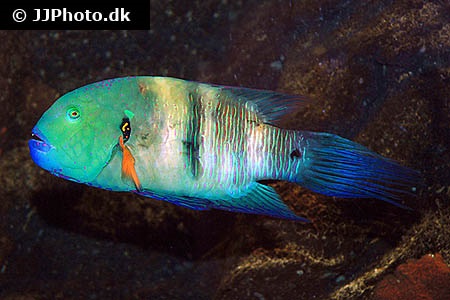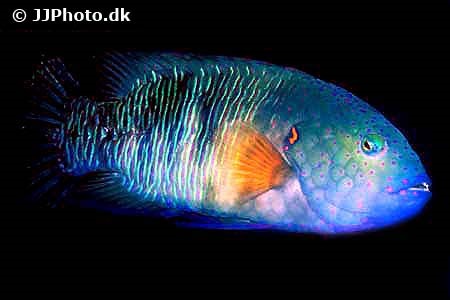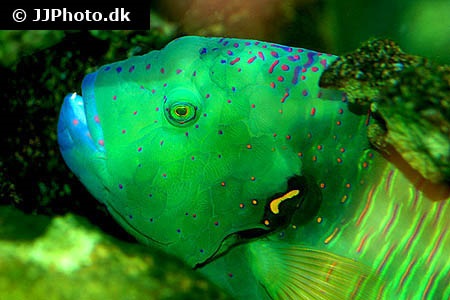Cheilinus lunulatus





| Latin name | Cheilinus lunulatus - (Forsskål, 1775) |
|---|---|
| Local name | Broomtail wrasse |
| Family | Labridae - Cheilinus |
| Origin | East Indian Ocean, West Indian Ocean, The Red Sea |
| Max length | 50 cm (19.7") |
| Minimum volume |
2000 l (528 gal) |
|---|---|
| Hardiness |
Average |
| Suitable for aquarium |
Suitable with care |
| Reef safe |
Not reef safe |
| Aggressiveness | Might be aggressive towards other species |
| Recommended |
Fish Larger crustaceans (Shrimp, crabs...) Other invertebrates |
|---|
This spicies might be a threat to smaller fishes.
This species eats shrimps, crayfish, crabs, small bivalves, sea urchins, snails and similar.
This species needs a very large aquarium when fully grown.
Exactly how big the aquarium should be is hard to say, but the size of this species is such, that it cannot normally be kept in a home aquarium.
This species must be fed with an appropriately varied diet.
These fish flourish better without other members of the same species in the aquarium.
There is a greater chance of success with this species if one can supply a living feed to allow it to adapt to the tank.
This species has a habit of rearranging rocks and sand.
Make sure rocks are placed securely on the substrate, so they cannot toppled over.
These fish may well hide themselves for a while, whilst getting acclimatized.
Do not disturb the fish while acclimating because it will prolong the process.
This species needs good hiding places, for example, between live rocks.
This species revels in swimming and requires an aquarium with ample space.
This species can change gender from female to male.
When a male is needed, a female changes sex and takes on the role.
Fish in the genus Cheilinus are larger than most Wrasses, even up to 6.5 foot (2 metres).
These fish are a threat to most invertebrates -but not corals- and small fish. It is probably necessary to feed with living foods at first and after some time with large pieces of seafood every, or every other day.
It must be noted that even though they can be aggressive themselves when first introduced. They can easily be stressed by other fish, or indeed aquarists, before they are properly acclimatized.
Wrasses are nearly always seen in reef aquaria, since many of the species are both attractive and useful in battling a range of unwanted invertebrates like i.e. flatworms, pyramide snails.
These fish live of everything from zooplankton to large crustaceans, sea urchins and the like.
The needs and behaviour of Wrasses vary greatly, so it is vital to familiarize oneself with the specific species before buying one.
| Aquarium trade | Yes |
|---|---|
| Distribution | Western Indian Ocean: Red Sea to the Gulf of Oman. |
| French common names |
Vieille balayette |
| Danish common names |
Kostehalet gylte |
| English common names |
Broomtail wrasse |
Scott Michael. 2004. Aquarium Fish: The Cheeklined Maori Wrasse, Cheilinus diagrammus - Advanced Aquarist - (English)
Bob Fenner. Maori/Splendour Wrasses, the Genera Cheilinus & (to): Oxycheilinus - Wet Web Media - (English)
Scott W. Michael. 2009. Wrasses and Parrotfishes (Reef Fishes Series Book 5) - TFH Publications / Microcosm Ltd. - (English)

